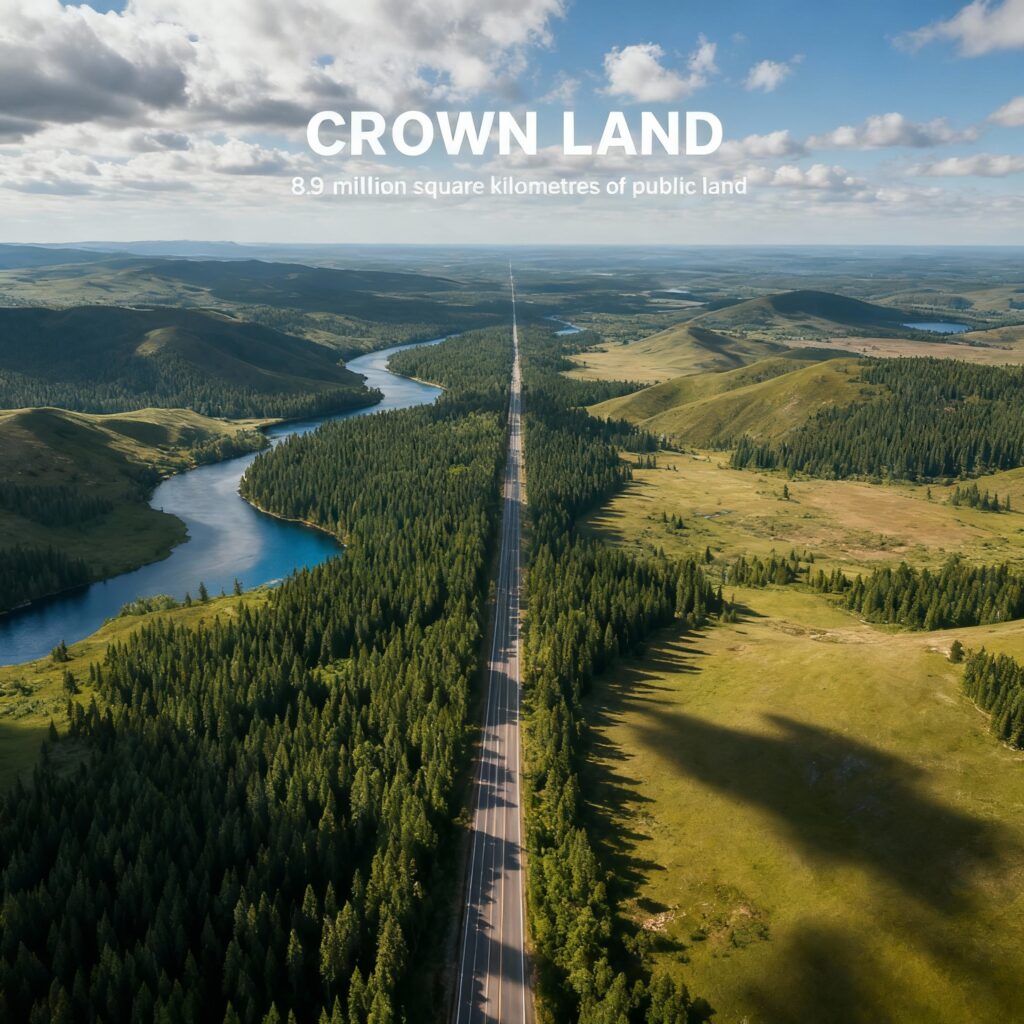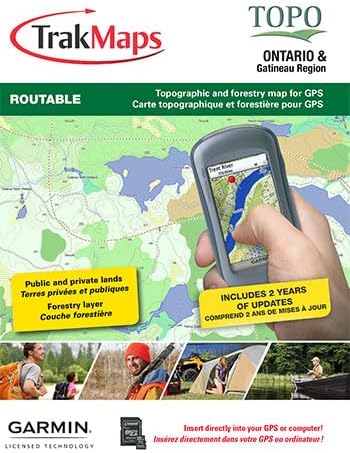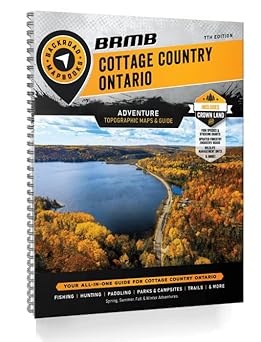What Does ‘Crown Land’ Really Mean?
Did you know that 89% of Canada belongs to you? That’s right – public land covers a staggering 8.9 million square kilometres of our nation. Crown land refers to publicly owned territory managed by federal or provincial governments on behalf of all Canadians. Unlike private property, these vast wilderness areas belong to every citizen. This territory includes forests, wetlands, prairies, shorelines, coastlines, and the beds of most lakes and rivers.

The Complete Picture: Public Land Explained
Here’s a mind-blowing statistic: only 11% of Canada is privately owned, while 41% is federal territory and 48% is provincial territory. Think about that – nearly nine out of every ten acres across our entire country is public property managed for your benefit.
Most federal territory sits in the territories (Northwest Territories, Nunavut, and Yukon), administered by Indigenous and Northern Affairs. Meanwhile, provincial governments manage the public lands within their borders through various Natural Resources ministries. These areas generate substantial government revenue through leasing rights for logging, mining, and energy projects.
Types of Public Territory: The Essential Breakdown
Federal Public Land (41% of Canada):
- National parks and First Nations reserves
- Canadian Forces bases and defence installations
- Federal harbours and canal systems
- Most territorial lands in Yukon, Northwest Territories, and Nunavut
Provincial Public Land (48% of Canada):
- 94% of British Columbia is provincial territory
- 95% of Newfoundland and Labrador
- 87% of Ontario (with 95% of northern Ontario being public land)
- 65% of Saskatchewan
- 48% of New Brunswick
- 29% of Nova Scotia
- Only 12% of Prince Edward Island (the smallest percentage)
Why Public Territory Matters: The Impact You Can’t Ignore
These government-owned lands form a very important historical and modern source of government income in Canada. Public territory generates billions in revenue through resource leasing, supporting essential public services. Over 90% of Canada’s sprawling boreal forest is provincial public land – that’s our nation’s green lung protecting climate and wildlife.
For outdoor enthusiasts, government territory offers unparalleled recreational opportunities. In Ontario alone, 87% of the province provides hunting, fishing, camping, and exploration opportunities. However, Nova Scotia has limited public territory at only 35% of its landmass compared to 50-90% in other provinces.
Real-World Applications: Where Public Territory Shows Up
Government-owned territory appears in every aspect of Canadian life. Clear-cut areas, tree plantations, open pit mines, hydroelectric dams and other marks of industry dot much of the public territory in the north of most Canadian provinces. National parks and provincial parks are some of the most visible allocations of government land to many Canadians.
Scientists regularly use these areas for research, employing stream gauges, wildlife inventories, and weather stations. A rising interest in renewable energy may open large areas of public territory for wind, solar, biomass and hydroelectric projects.
Concrete Examples That Make It Clear
Example 1: Ontario’s Public Territory Adventure
Ontario’s government territory covers 87% of the province, with 95% located in northern Ontario. A typical camping trip involves obtaining a non-resident camping permit for stays up to 21 days. You can camp, hunt (with proper licenses), fish, and explore millions of hectares managed by the Ministry of Natural Resources and Forestry.
Example 2: British Columbia’s Resource Management
British Columbia demonstrates public territory’s economic importance with 94% provincial coverage. The province leases these areas for forestry, mining, energy projects, and tourism. The Ministry of Forests, Lands and Natural Resource Operations issues public land tenures and manages sales.
Busting Common Myths About Public Territory
Myth #1: Government territory is restricted from public access
Reality: Nova Scotians are welcome to enter onto public land and explore its natural beauty. Hunting and fishing are permitted on government territory, in season and with a license. Most provinces allow public access for recreational activities.
Myth #2: The British monarchy owns and profits from Canadian public territory
Reality: Public land in Canada is owned by the provinces. Public corporations are a Canadian thing. While the legal title rests with the Crown, in contrast to private property, government territory belongs to all Canadians.
Statistical backing: Many Canadians are unaware that 89% of the country is public territory, leading to misconceptions about access rights and ownership.
Connected Terms You Should Know
- Public Land: Alternative term for crown land – Government territory is considered public property and is not part of the monarch’s private estate. Studies show most Canadians use these terms interchangeably.
- Federal vs. Provincial Jurisdiction: Only 4% of federally administered territory is found in the provinces, while provinces manage the majority of public land within their borders for economic and recreational purposes.
Tools and Resources That Help
Recommended Products
TrakMaps TOPO Ontario Map for Garmin GPS with Crown Land:
Why it matters: The only map of Ontario for GPS with Crown Land and forestry layer, perfect for hiking, hunting, geocaching, canoeing, and kayaking. Essential for navigating Ontario’s 87% crown land coverage safely.

Backroad Mapbooks: Cottage Country Ontario – 7th Edition:
Why it’s useful: Features updated Crown Land symbols for improved readability and revised trail charts. Critical for planning crown land adventures with detailed topographic information and camping locations.

Trusted External Sources
The Canadian Encyclopedia – Crown Land
Key insight: Authoritative source confirming 89% of Canada is Crown land with detailed breakdown of federal (41%) versus provincial (48%) ownership.
Why it’s reliable: Peer-reviewed academic resource with contributions from land management experts and regular updates reflecting current government data.
Government of Ontario Crown Land Information
Main finding: Ontario manages 87% of its territory as Crown land under the Public Lands Act, with comprehensive policies developed through public and Indigenous community consultation.
Statistical highlight: More than 95% of northern Ontario is Crown land, while southern Ontario has little Crown land due to historic settlement patterns.
Related Reading on SunnyDaysGo
Camping on Crown Land in Alberta: Your Ultimate Guide
What you’ll learn: Comprehensive guide to Alberta’s crown land camping regulations, permit requirements, and best practices for responsible wilderness recreation.
Key statistic: Alberta contains significant federal crown land at 10.6% of federally administered provincial land – among the highest in Canada.
Conservation Initiatives in Alberta’s Public Land Use Zones (PLUZs)
Why it matters: Explores how crown land designation supports conservation efforts while balancing economic development and recreational access.
Notable data: Demonstrates the interconnection between crown land management and environmental protection across Alberta’s diverse ecosystems.
Bottom Line: Crown land represents 89% of Canada – nearly 9 million square kilometres of public wilderness belonging to every Canadian. From camping and hunting to resource development and conservation, these lands generate billions in government revenue while providing unmatched recreational opportunities. Understanding crown land means understanding the foundation of Canada’s natural heritage and economic prosperity.